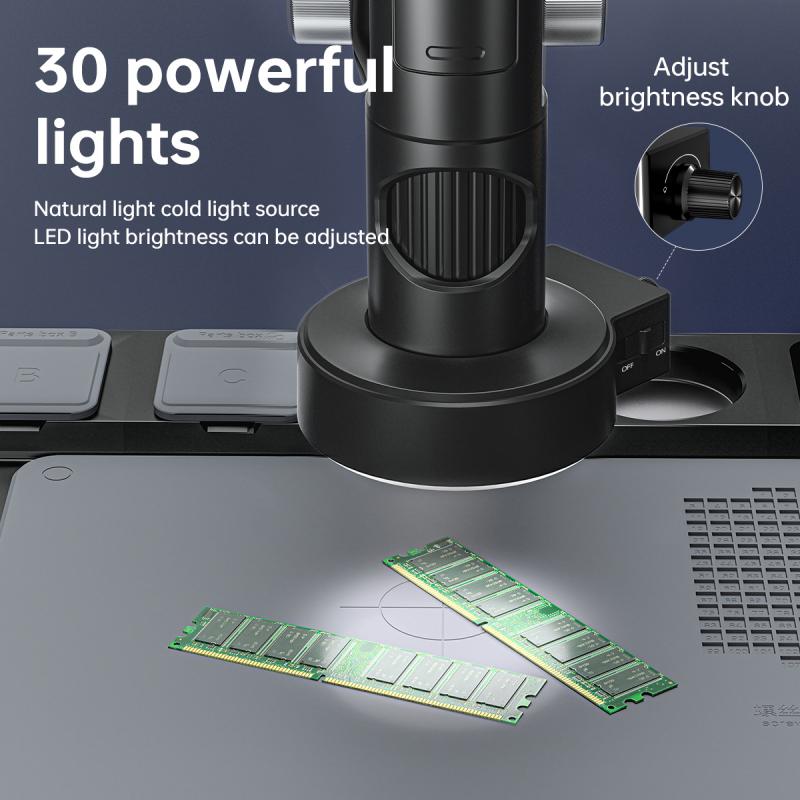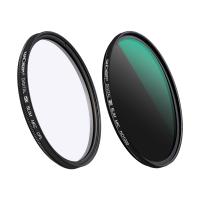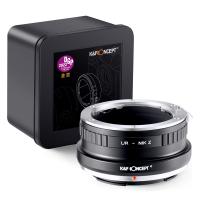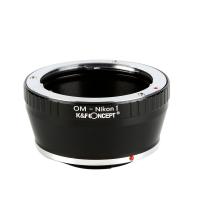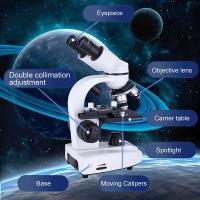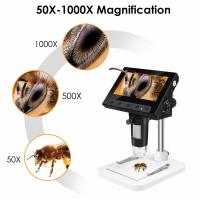Is There A Microscope That Can See Atoms ?
Yes, there are several types of microscopes that can visualize atoms. One such microscope is the scanning tunneling microscope (STM), which uses a sharp probe to scan the surface of a material and measures the flow of electrons between the probe and the surface. Another type is the atomic force microscope (AFM), which uses a tiny cantilever with a sharp tip to scan the surface and measures the forces between the tip and the atoms. These microscopes have revolutionized our understanding of atomic-scale structures and have been instrumental in various fields of science and nanotechnology.
1、 Scanning Tunneling Microscopy: Visualizing individual atoms on surfaces.
Yes, there is a microscope that can see atoms. It is called the Scanning Tunneling Microscope (STM). This groundbreaking invention has revolutionized the field of nanotechnology and allowed scientists to visualize individual atoms on surfaces.
The STM was first developed in the early 1980s by Gerd Binnig and Heinrich Rohrer, who were awarded the Nobel Prize in Physics in 1986 for their work. Unlike traditional optical microscopes, which use light to magnify objects, the STM operates on a completely different principle.
The STM works by scanning a sharp metal tip across a surface at a very close distance. A small voltage is applied between the tip and the surface, creating a tunneling current. By measuring this current, the STM can map the surface topography with atomic resolution. This allows scientists to see individual atoms and manipulate them with incredible precision.
Since its invention, the STM has been continuously improved, and newer variations have been developed. For example, the Atomic Force Microscope (AFM) is a type of STM that uses a mechanical probe instead of a metal tip. This allows for even higher resolution imaging and the ability to measure other properties such as magnetic forces and electrical conductivity.
In recent years, advancements in STM technology have allowed scientists to not only visualize atoms but also manipulate them. This has opened up new possibilities in the field of nanotechnology, where scientists can engineer materials and devices at the atomic scale.
In conclusion, the Scanning Tunneling Microscope is a powerful tool that has enabled scientists to see and manipulate individual atoms on surfaces. Its development has greatly contributed to our understanding of the nanoscale world and has paved the way for numerous technological advancements.
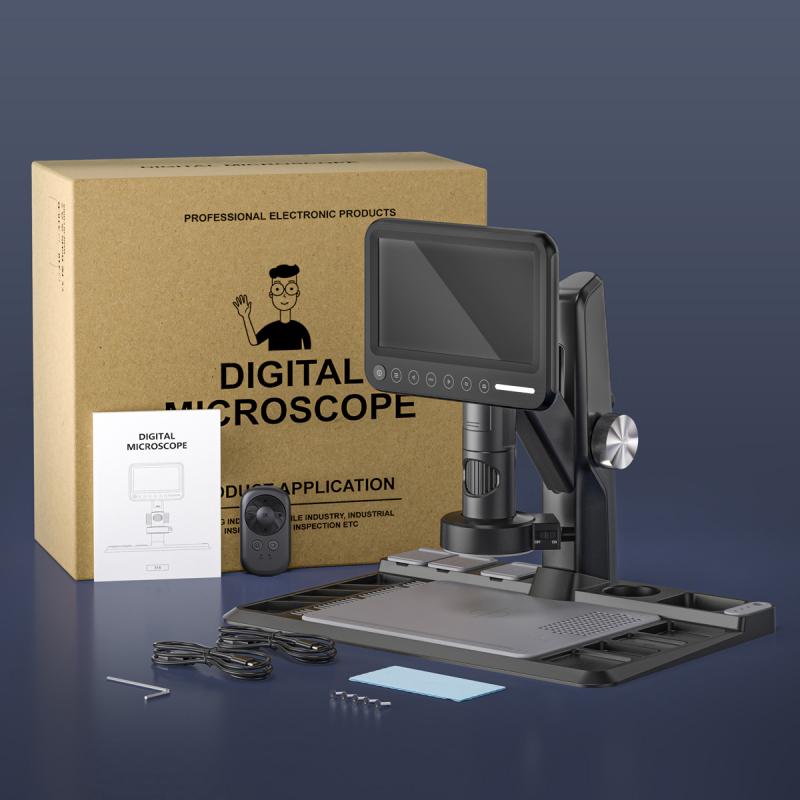
2、 Atomic Force Microscopy: Imaging atomic-scale features using a tiny probe.
Yes, there is a microscope that can see atoms - the Atomic Force Microscope (AFM). AFM is a powerful tool used in nanotechnology and materials science to image and manipulate matter at the atomic scale. It was first developed in the 1980s and has since revolutionized our understanding of the nanoworld.
Unlike traditional optical microscopes that use light to magnify objects, AFM operates on a completely different principle. It uses a tiny probe, typically a sharp tip attached to a cantilever, to scan the surface of a sample. As the probe moves across the surface, it experiences forces that are used to create a detailed topographic map of the sample.
The resolution of AFM is remarkable, allowing scientists to visualize individual atoms and even manipulate them. By scanning the probe over a surface, the AFM can create a three-dimensional image with atomic resolution. This capability has been instrumental in studying various materials, including semiconductors, polymers, and biological samples.
In recent years, advancements in AFM technology have further enhanced its capabilities. For example, high-speed AFM allows for real-time imaging of dynamic processes at the atomic scale. Additionally, non-contact AFM techniques have been developed, which minimize the interaction between the probe and the sample, enabling more delicate measurements.
Overall, AFM has become an indispensable tool for researchers in many fields. Its ability to see and manipulate atoms has opened up new avenues for understanding and engineering materials at the nanoscale. As technology continues to advance, it is likely that AFM will continue to evolve, pushing the boundaries of what we can observe and control at the atomic level.
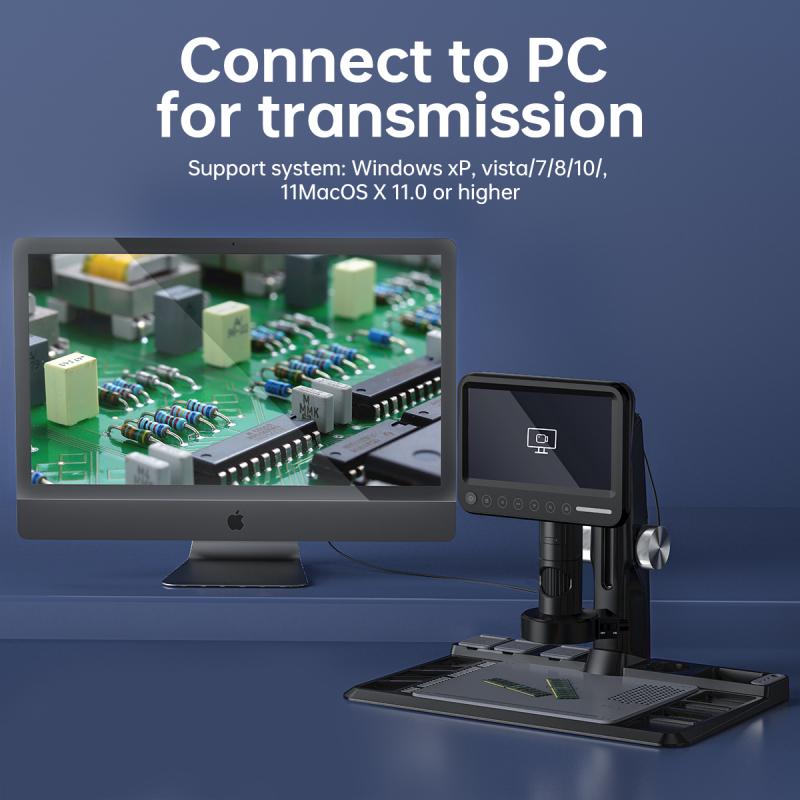
3、 Transmission Electron Microscopy: Resolving atomic structures through electron beams.
Yes, there is a microscope that can see atoms - Transmission Electron Microscopy (TEM). TEM is a powerful imaging technique that uses a beam of electrons to visualize the atomic structure of materials. It has revolutionized our understanding of the nanoscale world.
In TEM, a high-energy electron beam is transmitted through a thin sample, and the resulting interaction between the electrons and the atoms in the sample produces an image. The resolution of TEM is much higher than that of traditional light microscopes, allowing scientists to observe individual atoms and their arrangements within a material.
TEM has been instrumental in numerous scientific discoveries and advancements. It has been used to study the atomic structure of various materials, including metals, semiconductors, and biological samples. By visualizing the arrangement of atoms, scientists can gain insights into the properties and behavior of materials at the atomic level.
In recent years, there have been significant advancements in TEM technology. For example, aberration-corrected TEMs have been developed, which minimize the distortions caused by the electron beam, resulting in even higher resolution images. Additionally, in-situ TEM techniques allow scientists to observe dynamic processes in real-time, such as the growth of nanoparticles or the behavior of materials under different conditions.
However, it is important to note that while TEM can visualize atoms, it cannot directly "see" them in the conventional sense. The images produced by TEM are based on the interaction of electrons with the sample, and the interpretation of these images requires expertise and careful analysis.
In conclusion, Transmission Electron Microscopy is a powerful tool that enables scientists to resolve atomic structures and observe individual atoms. It has greatly contributed to our understanding of the nanoscale world and continues to advance with new technologies and techniques.
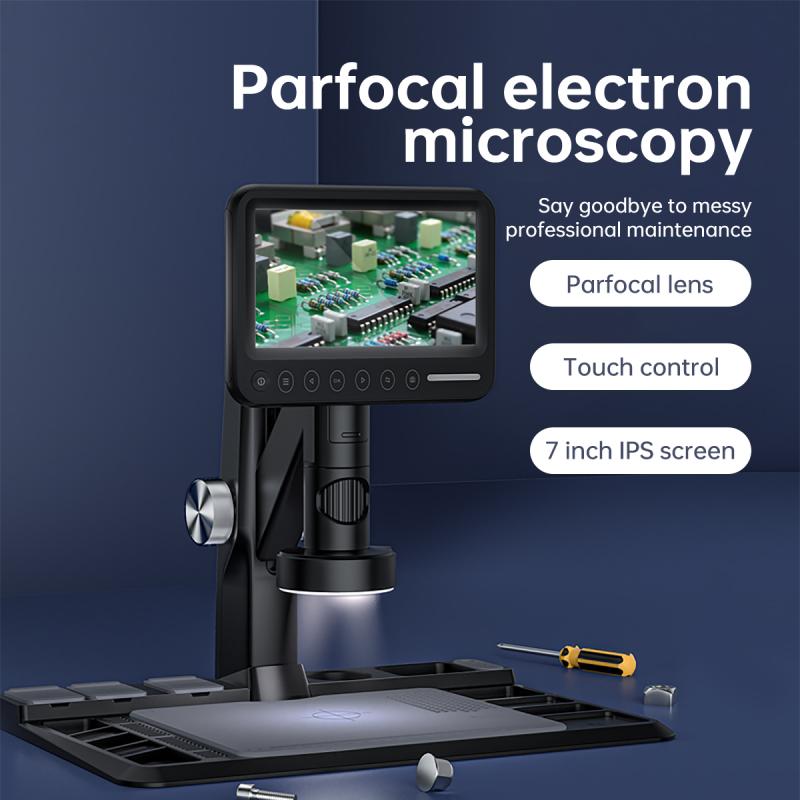
4、 Scanning Electron Microscopy: High-resolution imaging of surface structures.
Yes, there is a microscope that can see atoms. It is called the Scanning Electron Microscope (SEM). SEM is a powerful tool used in various scientific fields to obtain high-resolution images of surface structures. Unlike traditional optical microscopes, which use light to magnify objects, SEM uses a beam of electrons to create images.
The principle behind SEM is based on the interaction between the electron beam and the sample. When the electron beam hits the surface of the sample, it causes the emission of various signals, including secondary electrons, backscattered electrons, and characteristic X-rays. These signals are then detected and used to generate an image of the sample's surface.
SEM has the ability to achieve extremely high magnification, allowing scientists to observe objects at the atomic level. However, it is important to note that SEM does not directly "see" atoms. Instead, it provides detailed information about the surface topography and composition of the sample.
In recent years, advancements in SEM technology have further improved its capabilities. For example, the introduction of field emission electron sources has increased the resolution of SEM, enabling the visualization of even smaller features. Additionally, the development of environmental SEMs allows for imaging under controlled atmospheric conditions, providing insights into the behavior of materials in real-world environments.
In conclusion, while SEM cannot directly visualize individual atoms, it is a powerful tool for high-resolution imaging of surface structures. Its ability to provide detailed information about the topography and composition of samples has made it an invaluable tool in various scientific disciplines.
